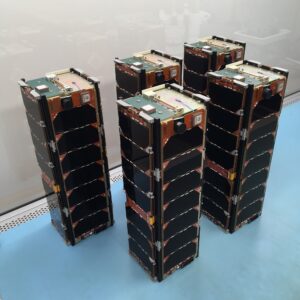It said this would be the first listing of a satellite constellation dedicated to the IoT market.
Proceeds will help grow Astrocast’s constellation to 100 satellites by the end of 2024, the company said June 23 as part of the announcement.
Astrocast, which has a network of seven satellites and started commercial operations in May, is set to add five more spacecraft after SpaceX’s Transporter 2 ride-share mission currently slated for June 25.
“A listing on a European stock market would represent a major step for the company as we are now accelerating the deployment of our constellation,” Astrocast chief financial officer Kjell Karlsen said in a statement.
The company said it has 20 customers across three continents and sees strong demand ahead for tracking, monitoring and other services that connect with IoT assets in the world’s most remote regions.
It has nominated two new board members as part of plans to potentially list as soon as the third quarter of this year.
They are Jon Cholak, managing director of Adit Ventures’ early-stage investment vehicle Adit Genesis, and Jan Eyvin Wang, a former CEO of Norwegian shipping company Wilhelmsen.
Adit is one of Astrocast’s financial backers, along with Airbus Ventures, Swiss family offices and the European Space Agency.
In 2019, Astrocast said it raised $9.2 million in a Series A financing round for a constellation of 80 satellites by 2023 or 2024, up from a previously planned 64-strong network so it can cover customers around the equator adequately.
Founded in 2014, Astrocast’s expansion plans come amid rising competition in the increasingly crowded satellite IoT market as other startups come online.
Also joining the Transporter 2 ride-share mission are extra IoT satellites for U.S.-based Swarm Technologies and OQ Technology of Luxembourg.
Astrocast expects there will be more than five billion connected IoT devices by 2025. It said current terrestrial-based cellular systems cover only about a tenth of the world’s surface area, with low-power wide-area networks (LPWANs) covering just a fraction of this, signaling an important role for satellite networks.



